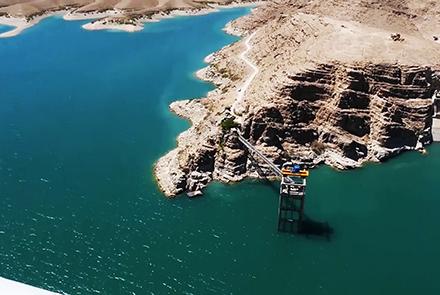A Turkish company will invest $114 million USD to extend the second phase of Kajaki Dam in Helmand province based on a memorandum of understanding signed between the Afghan Ministry of Finance and the Turkish company on Tuesday.
The project will be completed within the next two and a half years.
Finance Ministry spokesman Hamid Abdul Rahimzai said the second phase of the dam will be implemented within the framework of public-private partnership.
He said the dam will generate 150 megawatts of electricity after completion of the second phase.
“Power generation process will be increased. It is also helpful for water storage problems in Afghanistan. It means that it has the capacity to store almost one billion cubic (meters) of water and we can take advantage of that,” Rahimzai said.
Da Afghanistan Breshna Sherkat (DABS), the main power supplying company in the country, will purchase each kilowatt of electricity for 7.5 cents from the Turkish company in the next 20 years after the project is completed, said Wahidullah Tawhidi, spokesman for DABS.
“This company will generate electricity for twenty years and then it will hand over the dam to Breshna company and the Afghanistan government. The price of electricity will also change with changes on the economic front, but initially each kilowatt of power will be purchased for 7.5 cents,” Tawhidi added.
Kajaki is one of the two major hydroelectric power dams in Helmand.
The dam is located on the Helmand River 161km north-west of Kandahar and is operated by the Helmand and Arghandab Valley Authority. It has a dual function: to provide electricity and to irrigate at least 650,000 acres of an otherwise arid land.
Water discharging from the dam traverses at least 500km of downstream irrigation canals feeding farmland. It currently produces 33 megawatts of electricity.
The dam is 100 meters high and 270 meters long, with a gross storage capacity of 1.7 billion cubic meters of water. The dam controls the output of the main watershed which feeds the Sistan Basin.

